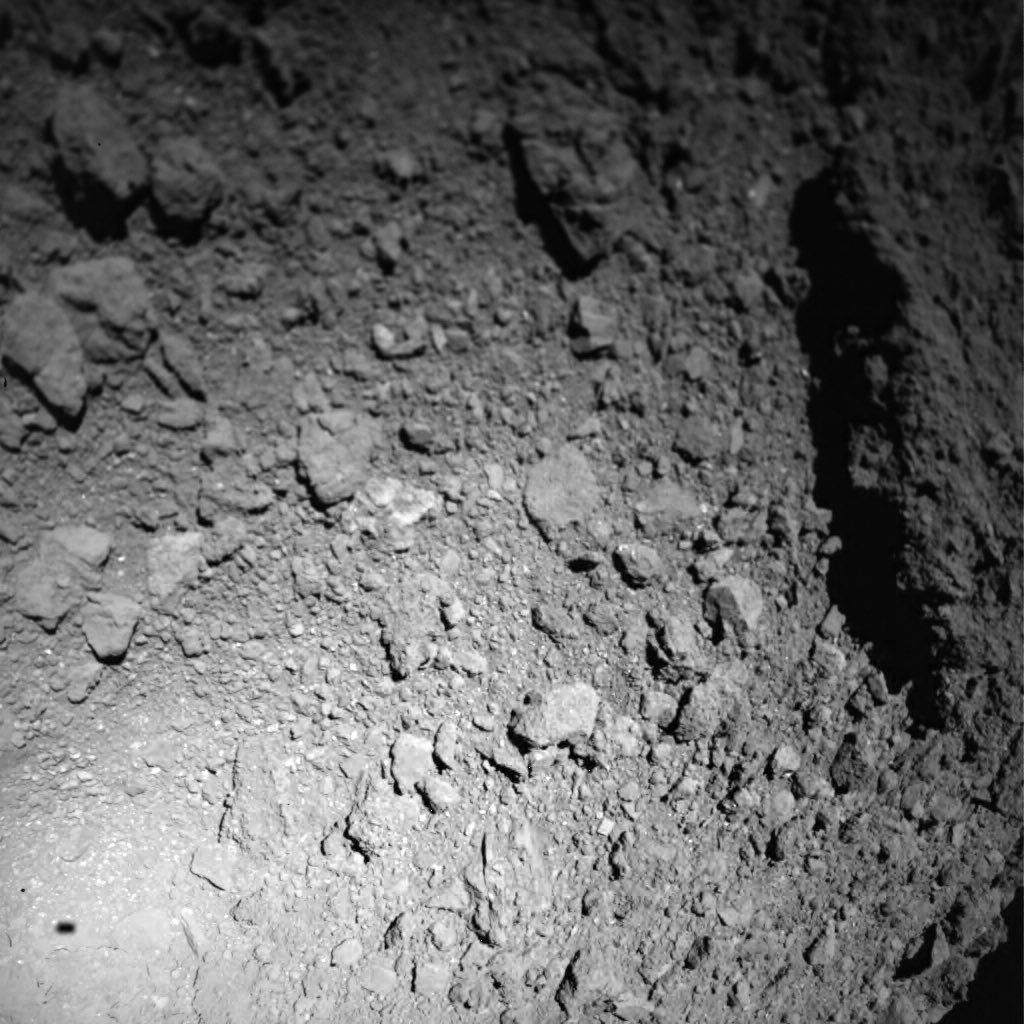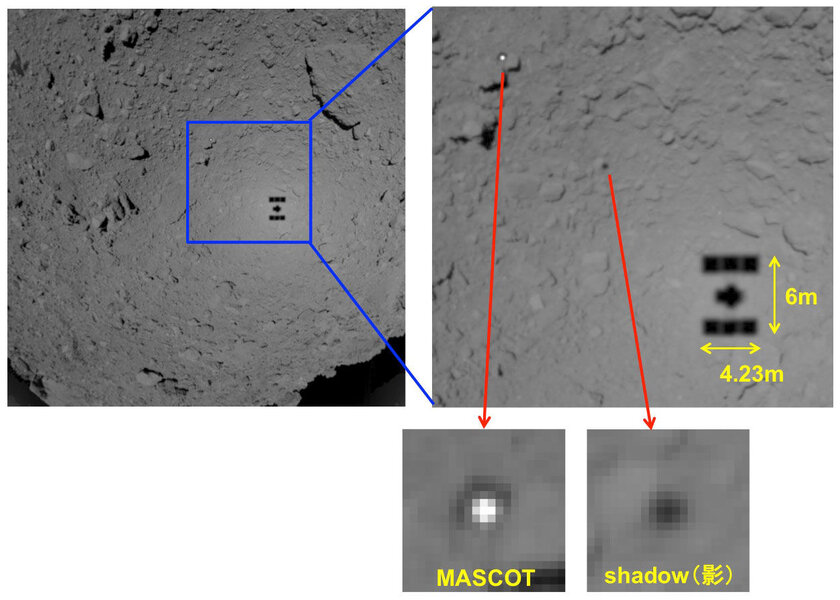Create a free profile to get unlimited access to exclusive videos, sweepstakes, and more!
Another robot lands on Ryugu

Welcome to Ryugu: An asteroid populated entirely by robots.
On October 3 the Japanese Space Agency (JAXA) probe Hayabusa-2 positioned itself just 51 meters off the surface off the tiny asteroid Ryugu and deployed the lander MASCOT (for Mobile Asteroid Surface Scout), which then successfully touched down on the surface 20 minutes later.
Unlike the previous two landers — MINERVA-II1 A and B, which were mostly just technology testbeds to see how to move around in an extremely low-gravity environment — MASCOT is equipped with four scientific instruments to study the asteroid. Unfortunately, these instruments required more power than solar panels could provide, so MASCOT has a one-use-only battery on board that kept it alive for 16 hours. So it's already turned off, sleeping on the surface, where it will most likely stay for a long, long time.
The data it took has been sent back to Earth, and scientists at JAXA are already poring over it. And of course some really interesting and cool images were sent back by MASCOT and the mothership during deployment.
This image was taken by MASCOT shortly after deployment; the asteroid surface fills the scene. If you look to the upper right you can see the shadow of MASCOT itself!
The image looks funny to me, like it's filled with craters. Do you see it that way as well, including the big one to the left?
Those aren't craters. They're rocks. If you see them as depressions you're suffering from the Crater Illusion, where the direction of the lighting (in this case, from "below") can make craters appear as hills and vice versa. Here's the image rotated 180°:
Aha! Now you can see the big dark spot that was on the left (and now is on the right) is actually the shadow from the overhang of a rock, and all the other dimples are actually small rocks.
This image taken by Hayabusa-2 is pretty nifty too:
On the left you can see the shadow of the spacecraft, and even make out the individual solar panels. The zoom shows it in more detail, and you can even see MASCOT and its shadow, too! I was astonished to see that there is some detail on MASCOT: The bright spot looks to be a circular antenna, surrounded by the body of the lander.
Here is a three-frame animation (each taken ten seconds apart) from Hayabusa-2 right after deployment, showing MASCOT moving through space across the asteroid below. MASCOT tumbled a bit, which gives you some perspective on its shape. It's small, roughly 30 x 30 x 20 centimeters — think of it as four medium pizza boxes stacked up and you'll be pretty close.
MASCOT is equipped with a camera (obviously, since you've seen some images here), an infrared spectrometer called MicrOmega which will help determine what minerals are on the surface, a magnetometer called MAG to measure the asteroid's magnetic field (if it has one), and a thermal radiometer called MARA to measure surface temperatures.
MASCOT wasn't a true rover like the MINERVA twins. It has what's called a "swing arm," a single-use lever that can manipulate the lander into a better position should it not land optimally. And in fact it was used once MASCOT touched down, allowing it to get the data it needed.
All that data from MASCOT will help scientists understand weird little asteroids like Ryugu. It's a rubble pile, like a sack of rocks held together by its own gravity. Many if not most small rocky asteroids will be like this, so Ryugu will be like a Rosetta Stone for them. For example: Ryugu is diamond-shaped, like two squat cones glued together base to base, and only about a kilometer wide. It has very low gravity and spins every 7.5 hours, and together this explains the shape. Rocks on the surface can move easily under outside forces due to low gravity, and the spin makes it feel like the equator is downhill, so they tend to roll in that direction. In the end, you get a bulging waist and pointy ends, which is what we see.
However, Ryugu's spin isn't that fast compared to other small rubble piles. Will they be even flatter? First we need to understand why Ryugu is the way it is, what it's made of, what the environment is like there, and then explore more of these little guys.
And mind you, Hayabusa-2's mission is far from over. Another rover (MINERVA-II2) will deploy in 2019, and even before then the main spacecraft itself will drop down to Ryugu in October 2018 and again February of 2019 to collect surface samples from the asteroid. In April it will slam a high-speed impactor into Ryugu to get subsurface samples as well. All of these will be collected and returned to Earth in late 2020.
And don't forget OSIRIS-REx, a NASA mission to the asteroid Bennu! It's about 130,000 km from the 500-meter-wide rock right now, and will rendezvous with it in December.
There's a lot of asteroid science coming, folks. Stay tuned. This'll be fun.































